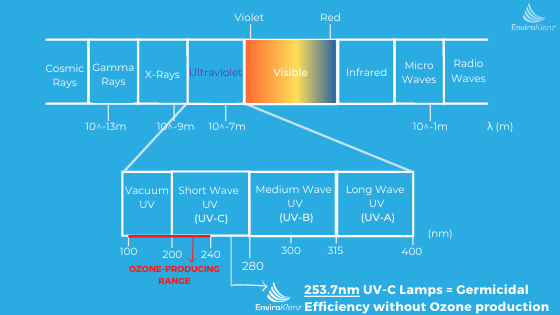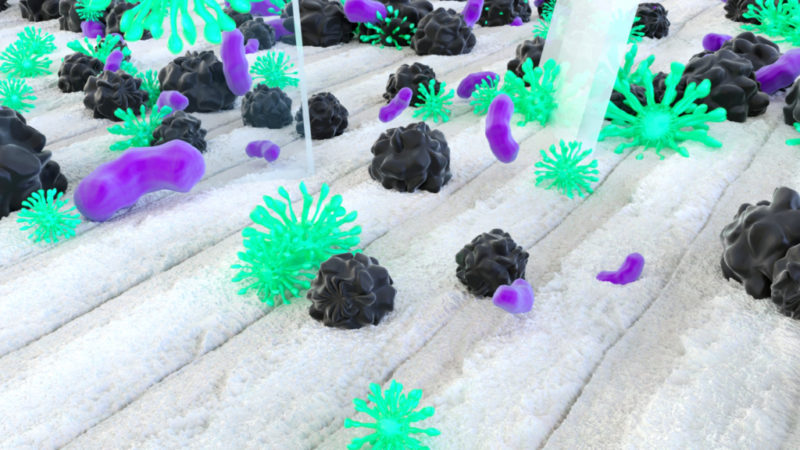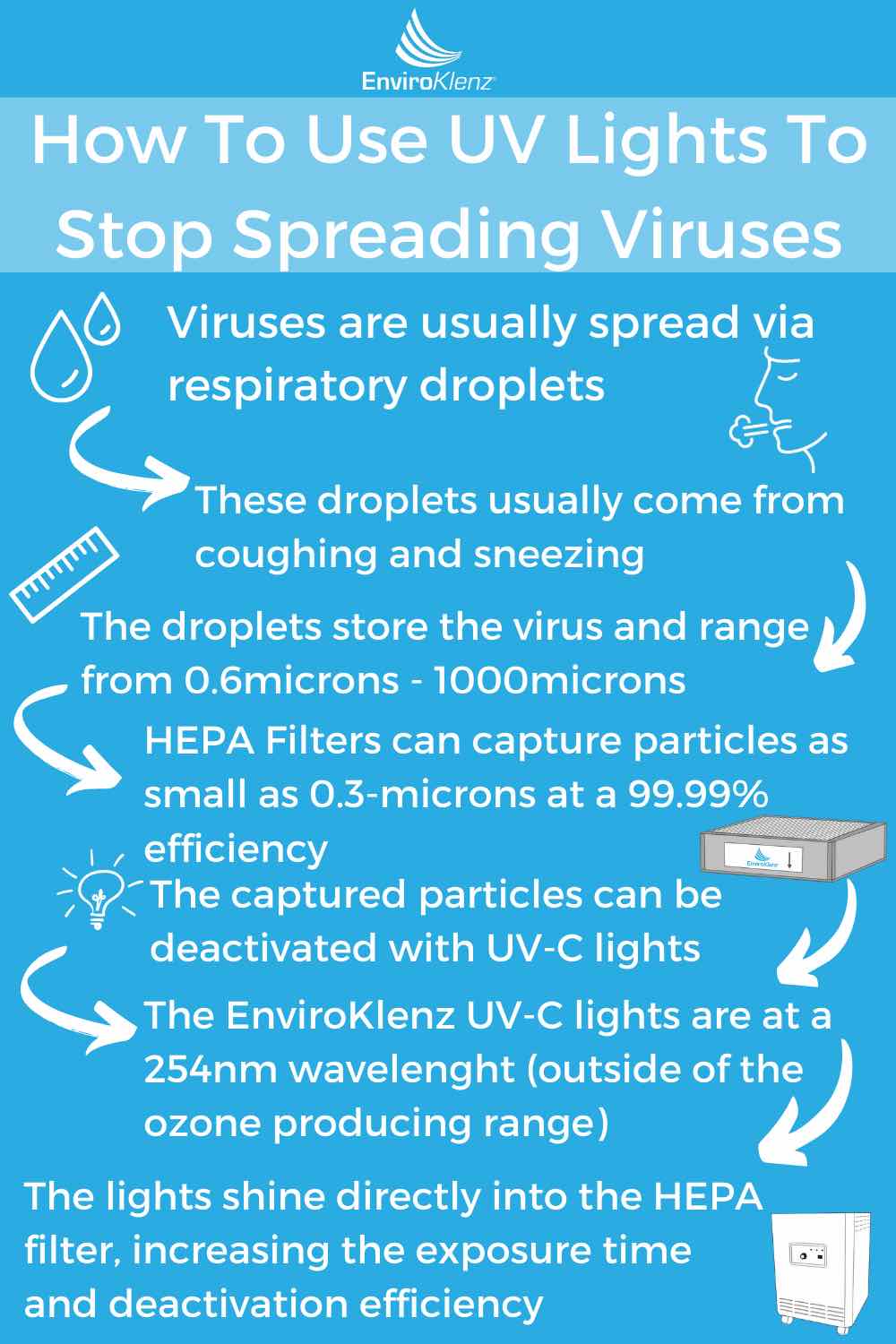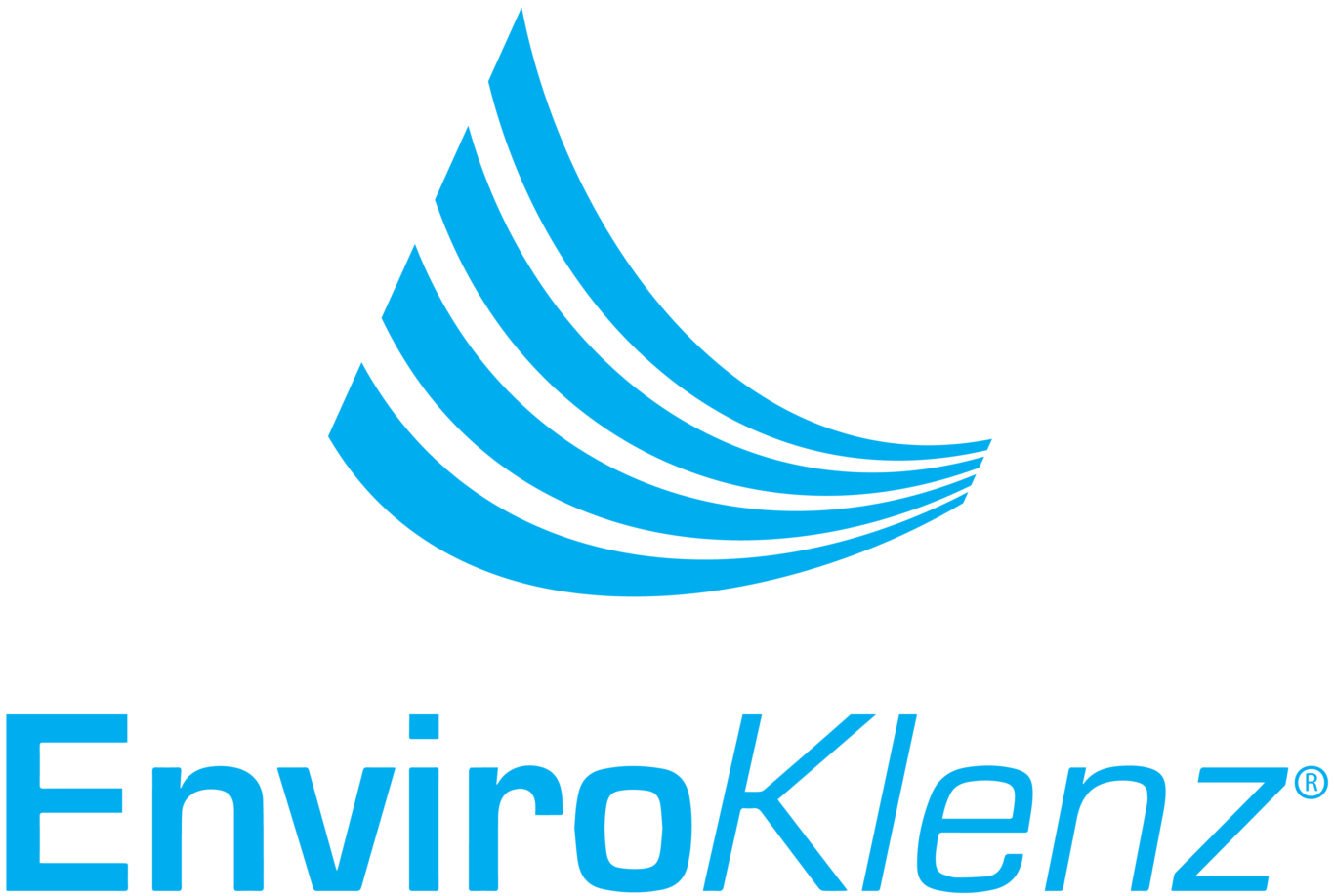Air purifiers have recently begun to become an important item to have within any and all indoor environments including personal homes, commercial spaces, and even public areas (such as hospitals, doctors’ offices, etc.). These air quality products contain many benefits and capabilities that can help to mitigate and improve the indoor air space of an environment, whether that be airborne pollution, odors, or even microorganisms’ emissions into the air of the space. There are various different types of air purifiers that are readily available on the market today for consumer purchase, some of these air purifier will use technologies such as ozone, ionization, carbon, or even specific patented technologies for pollutant removal in the air – giving individuals plenty of options when it comes to purchasing an air purification device.
One major component of air purifiers that many consumers may be curious about or wanting to learn more information about is the capability of UV lights within certain air purifiers to help in the removal of airborne microorganisms from a specific indoor air space. Ultraviolet germicidal lights have become a popular addition to many air purifiers models today, due to the enhanced ability of these lights to effectively kill collected microorganisms within the inside of these air purifier structures. However, how exactly does UV lights work in an air purifier and what are the benefits of investing in a HEPA UV air purifier for your indoor living spaces?
In this article we are going to learn more about the benefits of UV lights within these popular air devices, the potential health risks produced from certain UV lights, and the best air purifier to use that contains these UV lights within their systems.
What Does UV Stand for
Ultraviolet radiation also referred to a UV are invisible rays of light that are part of the energy that comes from the sun – and most notably this light is responsible for the nasty sunburn you might get on your body after long periods of exposure in the sun. These ultraviolet radiation rays will come in various types, based on how much energy they have – with the higher energy UV rays forming ionizing radiation that can be significantly hazardous to humans when exposure occurs in the environment. The different UV radiation categories are divided into three main groups the include UVA rays, UVB rays, and UVC rays. Ultimately, these three main groups of UV rays will act differently when used in products in the environment, some can present benefits while other can present potential hazards to the environment and the individuals exposed to these environments, according to the American Cancer Society.
UVA Rays
The ultraviolet rays with the least energy amount of all the UV rays, UVA rays are known for causing skin cells to age and potentially can cause some indirect damage to cells’ DNA. These UV rays are primarily connected with long-term skin damage that will result in wrinkles, as well as skin cancers.
UVB Rays
UVB light rays have a greater amount of energy than UVA rays, and these ultraviolet rays will therefore be able to damage the DNA in skin cells directly. When skin cells are damaged directly it will lead to what people are familiar as a sunburn on the body’s skin. In addition to the damage that UVB rays can do directly to the skin cells, it is also characterized as the UV ray that can cause the most skin cancers in individuals.
UVC Rays
The ultraviolet rays with the most amount of energy, UVC rays will react with ozone high in the atmosphere and therefore the rays won’t reach the ground which will make them not a risk factor for skin cancer. In addition to the UVC rays that are created in the atmosphere, some UVC rays can also come from man-made sources such as arc welding torches, mercury lamps, and UV sanitizing bulbs used to kill bacteria and other germs in the environment.
How Does a UV Light Work
When it comes to UV lights that are integrated into air handling systems and air purifiers, most commonly UVC germicidal ultraviolet radiation will be used to accomplish the desired results in these applications. UV-C light, as we stated above, is germicidal and therefore it will work by deactivating the DNA of bacteria, viruses, and other pathogens which will destroy these pathogens ability to multiple and cause diseases, specifically in airborne pathogens present in the air space of an indoor area. This form of UV light will work to cause damage to the core nucleic acid of microorganisms, and this is done by developing covalent bonds between certain adjoining bases in the specific DNA. When this bond occurs, it will therefore prevent the DNA from being able to replicate in the environment, and additionally the organisms will be unable to reproduce.
The capabilities of UV lights will be a beneficial addition to many products used in indoor spaces, specifically air purifier devices. The most recent information released from third-party studies such as from the EPA has demonstrated the potential risks of indoor air quality in homes and other indoor spaces, therefore more and more people are turning to air purification in these environments. Thus, having the added capability of UV lights in these air devices will help to provide better removal results in these indoor spaces, particularly when it comes to viruses, bacteria, and mold spore removal from the air space.

What is UV Light Used For
The use of UV lights can be broad across different products or solutions used in indoor environments, whether it be for application on our skin, for sterilization and disinfection, and for fluorescence and lighting. The capability of UV lights when used in specific products, particularly because of its germicidal capabilities makes for its popularity in these various applications. When it comes to UV lights used on a person’s skin, it is mainly used in tanning beds which use UVB light lamps that are known to increase the chances of skin cancers in a person who is heavily exposed to this light. Tanning beds are one of the most controversial uses of UV lights for human exposure because of these potentially dangerous risks.
While on the other hand, UV light that is used for sterilization and disinfection purposes can include the use of UVC lights inside of air purifiers and other air quality devices, as well as in water filtration. Germicidal UV lighting will be used to destroy and remove bacteria and viruses from the environment in which the UV light is placed within.
Is UV Light Bad for You
The age-old question when it comes to the use of UV light is if exposure is harmful or bad to human health. Generally, however, the exposure risks of this light to human health will vary depending on the type of UV light that is used and that a person comes into contact within their environment. The three types of UV rays, UVA, UVB, and UVC will all present various risks to the health of an individual. As we discussed previously, UV exposure can lead to skin damage and even respiratory problems potentially when the UV lights produce ozone into the air space of the enclosed area.
In addition to the various skin risks that a person may acquire from UV light exposure, the World Health Organization (WHO) also states the following in regard to UV health risks;
“Chronic exposure to UV radiation can cause a number of degenerative changes in the cells, fibrous tissues, and blood cells of the skin – these can include freckles, nevi, and lentigines, which are pigmented areas of the skin, and diffuse brown pigmentation.”

Does UV Light Kill Viruses
When it comes to one of the most important features of UV light inside of air quality products like air purifiers is its ability to eradicate and destroy airborne microorganisms and pathogens in the air. During the flu season and other times of the year when viruses are heightened in the environment, many people will seek extra protection in their indoor environments as these viruses and bacteria can become airborne in the space. These airborne pathogens can easily become ingested or inhaled into the human body and begin the process of infecting an individual which will cause certain health effects over a certain period of time.
According to WebMD, researchers have collected information that has proven broad-spectrum UVC lights can kill viruses and bacteria, and thus the reason behind why this type of light is used to decontaminate surgical equipment, as well as used in air purifiers for indoor spaces. The science behind UV light allows for the UV rays to effectively kill bacteria and viruses by destroying the molecular bonds that hold their DNA together and this allows for these pathogens to be removed from the indoor air of the treated space where the air UV is utilized.

Is UV C Light Safe in Air Purifier
As we discussed previously, most air purifiers today utilize UVC lights within their systems that will provide the air purifier with the capability to effectively kill airborne microorganisms from the air of this environment. While many of these UV lights used in air purifiers are safe for use, some of them may contain certain hazards such as ozone generation and emission in the environment in which the purifier is placed within. Is ozone dangerous? These various air purifiers that use ultraviolet lights are mainly designed to burn and damage airborne particles, particularly microorganisms, whey these pollutants come into contact with the light. However, while the lights are working to accomplish the effective destruction of these pathogens, it may also lead to health concerns – depending on the specific wavelength that the UV C lights produce when used inside of the structure of the air purifier.
UV lights can potentially produce and release ozone into the indoor environment when the UV light fall within a certain wavelength. The UVC lights contain a specific wavelength, while general “UV” rays encompass the wavelengths of 100-380 nm. The ozone producing range is more specifically 160-240 nm. While, UVC lights are low-pressure lamps that are similar to fluorescent lamps, and this germicidal light will contains a specific wavelength of 253.7 nm (1182.5 THz) which is outside of the ozone producing range. Although you may be weary after learning that some UVC lights that are housed within air purifiers can potentially create ozone that can spread to your indoor air, there are many air purifiers that will still use UVC lights for germicidal destruction while not producing ozone, such as the EnviroKlenz UV Air Purifier.
 The EnviroKlenz UV Air Purifier is a revolutionary air purifier that contains a two-stage filtration along with a set of UVC lights within the system to provide a triple-threat pollutant removal (noxious and toxic chemicals and odors, particulate matter, and airborne microorganism destruction). EnviroKlenz contains a proprietary earth mineral technology that works by capturing, containing, and neutralizing a broad spectrum of noxious and toxic chemicals and odors from the air, without the use of chemicals or masking agents. In addition to this non-toxic technology for broad spectrum odor and chemical removal, the EnviroKlenz Air Purifier also contains a second-stage filtration that consists of a hospital-grade HEPA filter for fine particulate removal larger than 0.3 microns in size. Located strategically in between these two filtration processes in the EnviroKlenz Air Purifier are two UVC lights that work specifically to shine directly on the collection site of the HEPA filter and allow for a high efficiency destruction of these microorganisms (viruses, bacteria, and mold spores). Unlike other UVC lights, the UVC germicidal lights used in the EnviroKlenz UV Air Purifier has a wavelength of 254 nm, which is outside the ozone producing range and therefore makes it safe for use inside your personal indoor spaces.
The EnviroKlenz UV Air Purifier is a revolutionary air purifier that contains a two-stage filtration along with a set of UVC lights within the system to provide a triple-threat pollutant removal (noxious and toxic chemicals and odors, particulate matter, and airborne microorganism destruction). EnviroKlenz contains a proprietary earth mineral technology that works by capturing, containing, and neutralizing a broad spectrum of noxious and toxic chemicals and odors from the air, without the use of chemicals or masking agents. In addition to this non-toxic technology for broad spectrum odor and chemical removal, the EnviroKlenz Air Purifier also contains a second-stage filtration that consists of a hospital-grade HEPA filter for fine particulate removal larger than 0.3 microns in size. Located strategically in between these two filtration processes in the EnviroKlenz Air Purifier are two UVC lights that work specifically to shine directly on the collection site of the HEPA filter and allow for a high efficiency destruction of these microorganisms (viruses, bacteria, and mold spores). Unlike other UVC lights, the UVC germicidal lights used in the EnviroKlenz UV Air Purifier has a wavelength of 254 nm, which is outside the ozone producing range and therefore makes it safe for use inside your personal indoor spaces.
Benefits of Using an Air Purifier with HEPA Filter and UV Light
There are several benefits when it comes to using an air purifier that contains the dual capability of HEPA filtration and UV light exposure to respectively capture and destroy collected microorganisms (viruses, bacteria, and mold spores) that the high surface area of the HEPA filter accumulates within an air purifier. When it comes to collecting the small particulate matter of these airborne microorganisms in the air, a hospital-grade HEPA filter will be one of the most effective types of filters that can be used in an air purifier to capture those smaller particulate matter that are larger than 0.3 microns in size – therefore allowing the filter to capture those microorganisms in your indoor air.
Similar to the EnviroKlenz UV Air Purifier that is a UV light air purifier, those air purification devices that use both a HEPA filter and UV lights will provide many benefits that will include the ability for the UVC lights to be positioned directly above the HEPA filter media to shine effectively on the collection site of the microorganisms on the HEPA filter to provide a high efficiency of destruction of these airborne pathogens in the air that can potentially compromise the health of the occupants in this space. Therefore, the combination of these two filtration methods inside of an air purifier can be a game changer not only for your indoor air quality but also for the health of all those exposed in this indoor space.

The EnviroKlenz® Mobile Air System with UV Light combines Advanced EnviroKlenz technology for toxic and noxious chemical and odor removal with HEPA filtration and ultraviolet germicidal radiation (UVC) to remove airborne particulates and allergens, and inhibit growth of captured microorganisms (such as bacteria, mold and viruses).
- EnviroKlenz Air Cartridge is effective against toxic or noxious odors and chemicals through our proprietary “Adsorptive Neutralization” process. The EnviroKlenz Air Cartridge is designed to last 3 months, ensuring that the unit operates at peak odor removal efficiency at all times.
- The HEPA filter captures harmful dust, particulate, allergens, pet dander, microorganisms, and more. Because there is no bypass around the HEPA filter, every unit performs at HEPA efficiency.
- UVC lamps are located before (and radiating on) the collection side of the HEPA filter. Unlike systems that depend on killing/inactivating the organisms as they pass through the UVC light in a very short period of time, the UVC light is continuously shining on the collected organisms with a very high efficiency of kill.
- Indicator lights inform you when individual UVC lamps need to be replaced or when the HEPA filter is clogged with particulate buildup. The system monitors HEPA filter loading by a differential pressure switch that measures air resistance through the filters, not by a timer, so that you get maximum usage out of the HEPA before replacement because you know exactly when it is blocked.
- A four speed blower offers the quietest and most efficient air flow on the market. The low Whisp-Air speed allows for silent operation. Medium to High speeds create maximum air efficiency at noise levels suitable for residential and commercial use.
- Affordable maintenance costs.
- No tools are required for unit maintenance.
- Dimensions: 15.5″W x 15″D x 22″H; weighs 50 pounds. 115 volts; 60 Hz; 1 amp; 100 watts; 8 foot power cord.
UV Mobile Air System

$899.00 $799.00

✓ Patented earth mineral technology works to attack VOCs and break them down on a compound level
✓ No chemicals or masking agents
✓ Will not release any chemicals back into your environment
✓ UVC lamps are continuously shining on the collected organisms with high effeciency of kill and destruction

